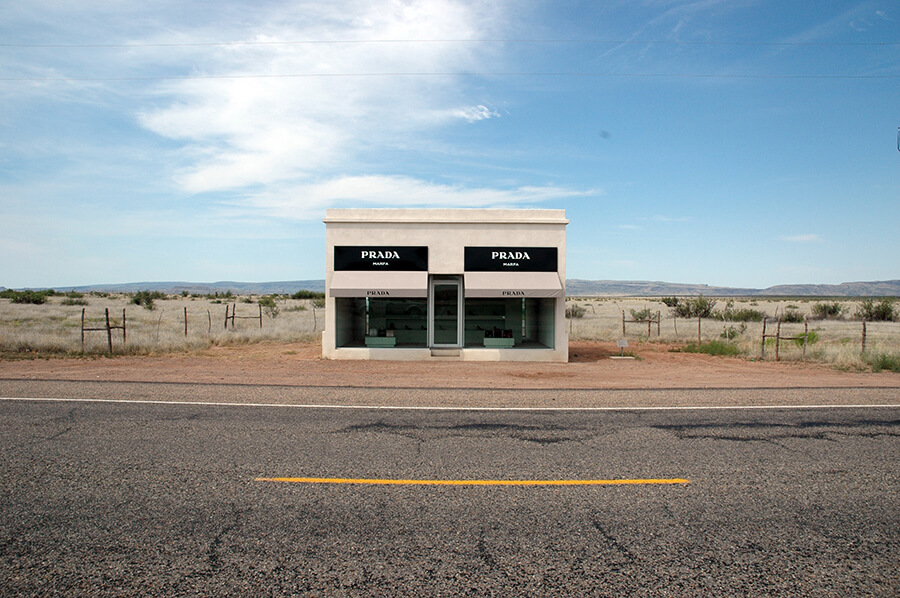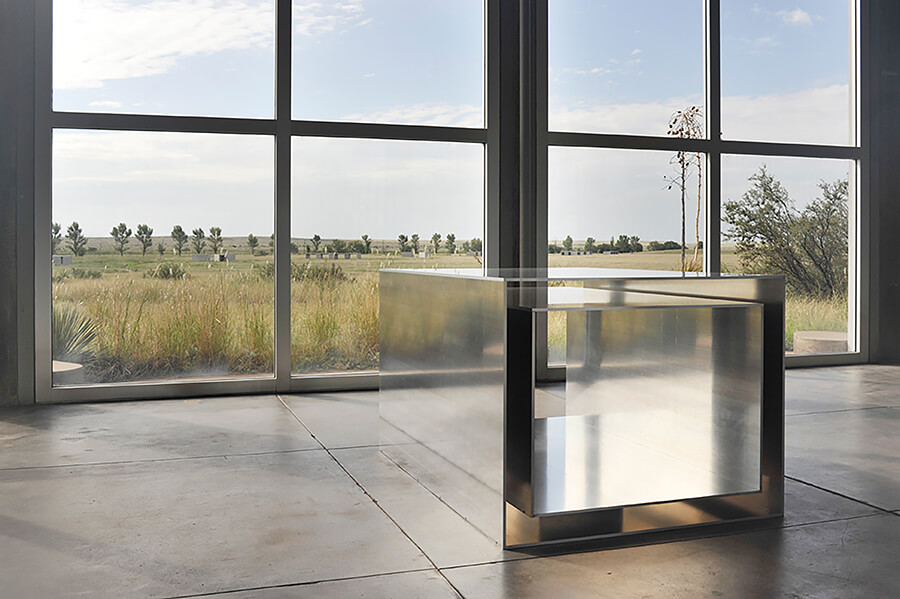“They speak about Marfa with the same kind of reverent tones generally reserved for the pilgrimage of the Virgin of Lourdes.” — Carolina Miranda
Less than a couple of thousand souls reside in Marfa, an arid town to the far west of Texas in the high plains of the Chihuahuan Desert of Presidio County, protected on three sides by a cluster of mountains. The town’s stubborn inaccessibility — a dusty three-hour drive from the nearest airport, El Paso — further adds to her mystery.
Established as a railway water spot in 1883, Marfa, so goes the legend, was named by a freight company executive’s wife after a character created by Dostoyevsky in The Brothers Karamazov. Others claim it to be named after a character in Michael Strogoff, a novel by Jules Verne. Either way, it has been captivating creatives and inspiring adventurous types ever since.

During the 1940s, Marfa emerged as a military stronghold, the home of, among other things, an advanced flight-training base and a prisoner of war camp. At the decade’s close, western High Lonesome starring John Drew Barrymore (father of actress Drew) was filmed in the town, followed by James Dean’s last film, Giant, released in 1956.
The next year, at the other end of the end of the country in the city of New York, a young artist by the name of Donald Judd held his first exhibition of expressionist paintings. As the years passed, Judd shifted his attention from brushstrokes to buildings and other three-dimensional mediums, gradually cementing his reputation as one of the most revered artistic minds of the 20th century, and in 1968 purchased a multi-storey warehouse in the Big Apple to permanently display his ever-sprawling artworks. Three years later, Judd discovered Marfa, the antithesis of the city that never sleeps of which he had grown so tired, and declared it the ideal site upon which to showcase his expanding minimalist ideals.
Judd spent around US$2 million buying dozens of the town’s buildings in order to fill them with personal creations and classical and contemporary pieces by his peers. His vision was to turn the town itself into an art oasis, dedicating the rest of his days constructing his creative paradise. By the time of his passing in 1994, aged 65, Judd’s property portfolio included a couple of aircraft hangers, a bank, a hotel, a hot springs and a 400-acre former cavalry base. Today, they’re estimated to be worth more than fifteen times what he invested, and managed by the Judd Foundation, which preserves the artist’s works, and the Chinati Foundation, which runs a museum on that cavalry base. The rest of the buildings still bear testament to Judd’s vision, home to an eclectic array of instillations and exhibits by artists such as Rembrandt and Yayoi Kusama.

“Marfa is the kind of place where people actually want to live,” reports Neda Ulbay for NPR. “But the lack of a hospital weeds out retirees. And young families with kids are deterred by corporal punishment in the public school.” So the “artsy population” is limited to the wealthy and the “truly hardcore”.
“You just come out here and you feel like, I want to make something,” sculptor Campbell Bosworth tells Ulbay. “I want to do something!”
In Judd’s obituary, the New York Times describes his legacy as “permanent installations of contemporary art that are among the largest and most beautiful in the world”.






